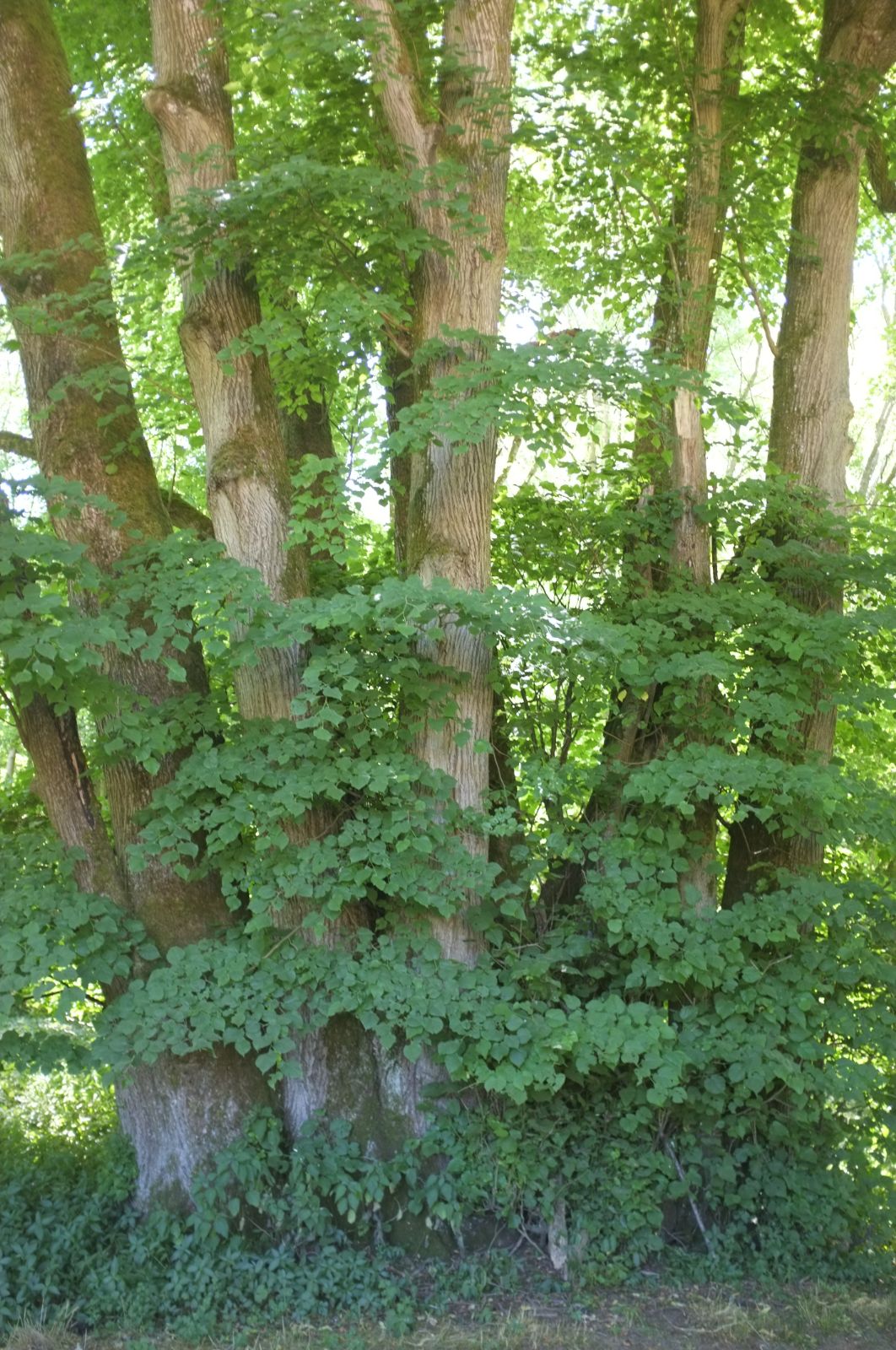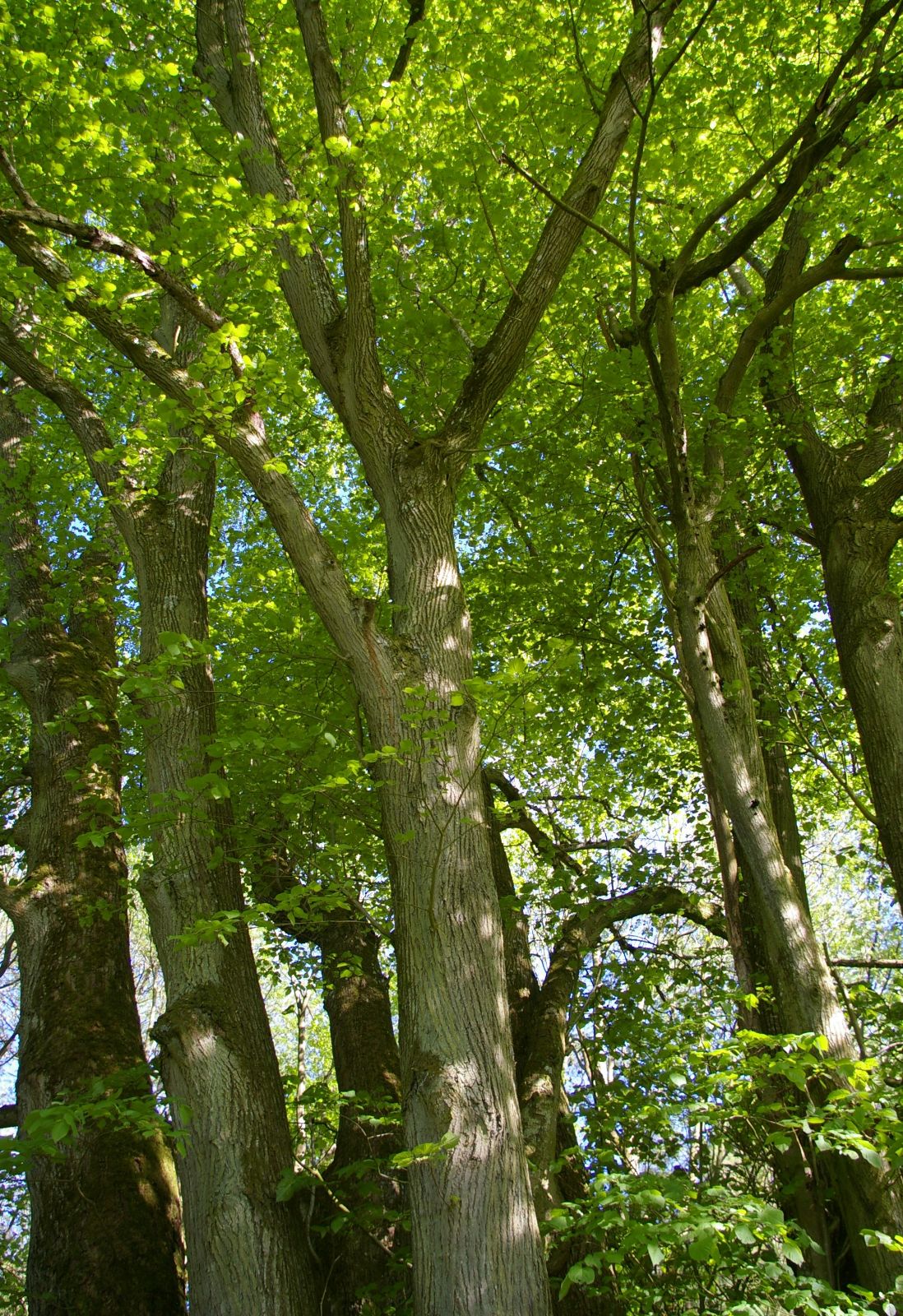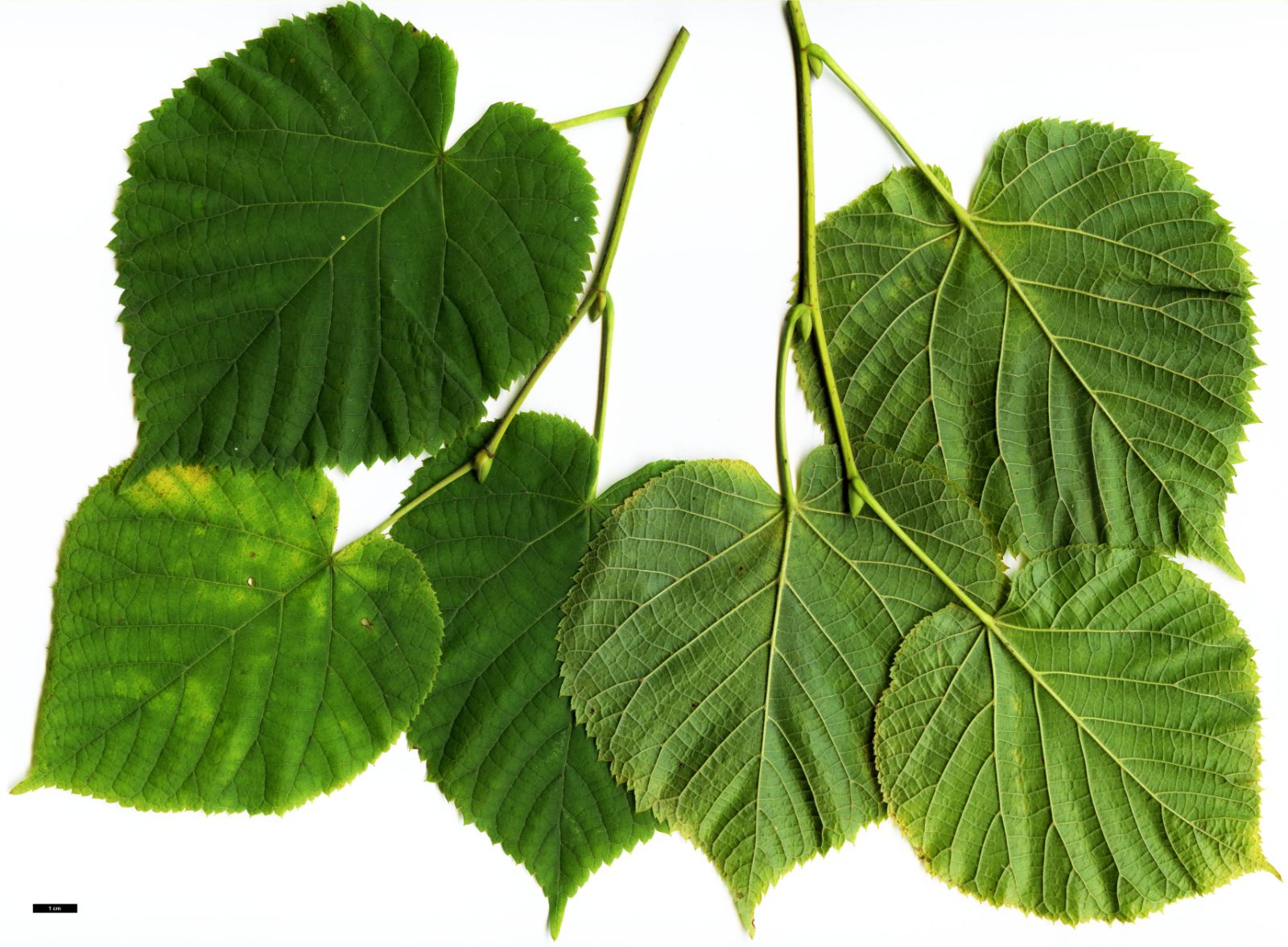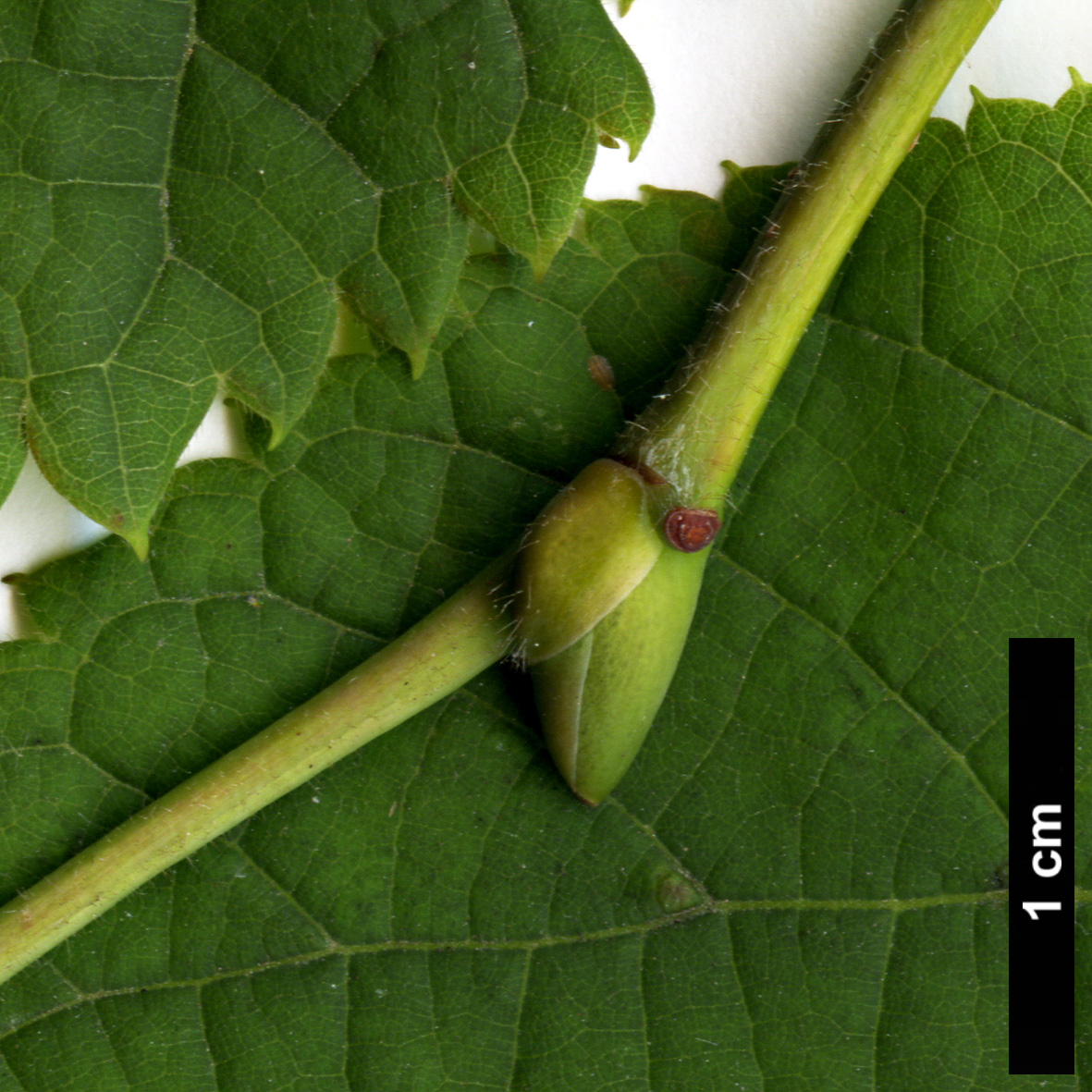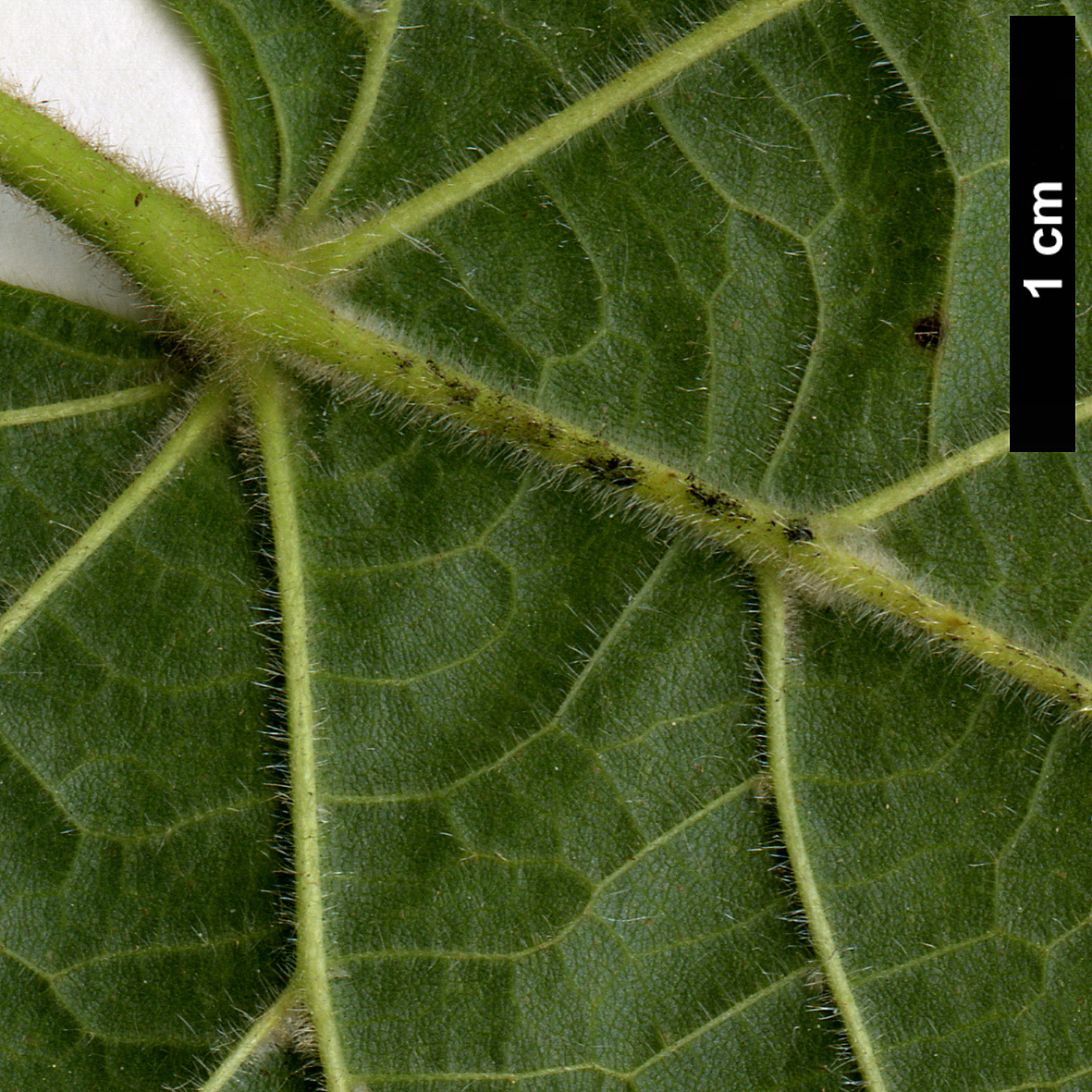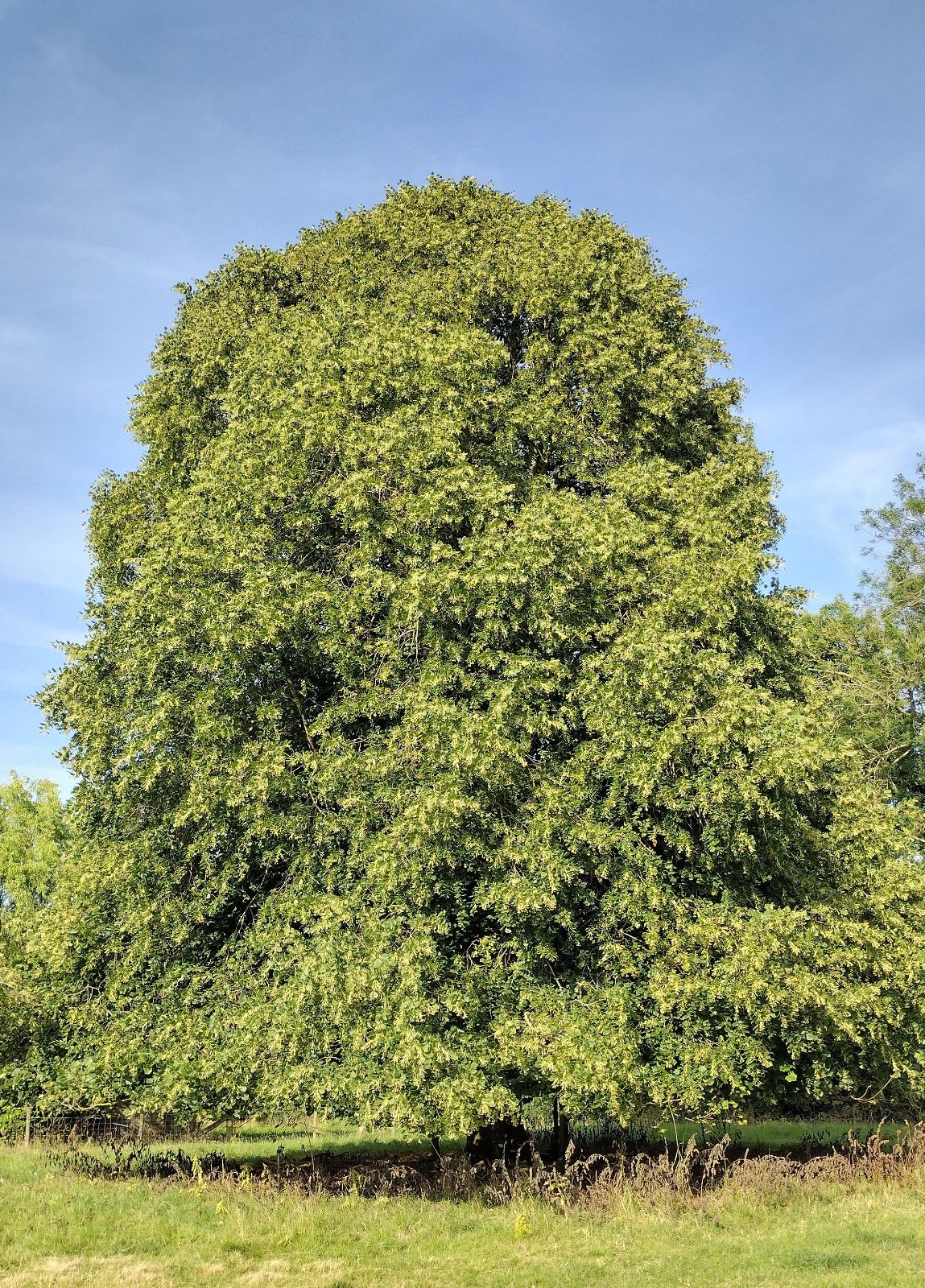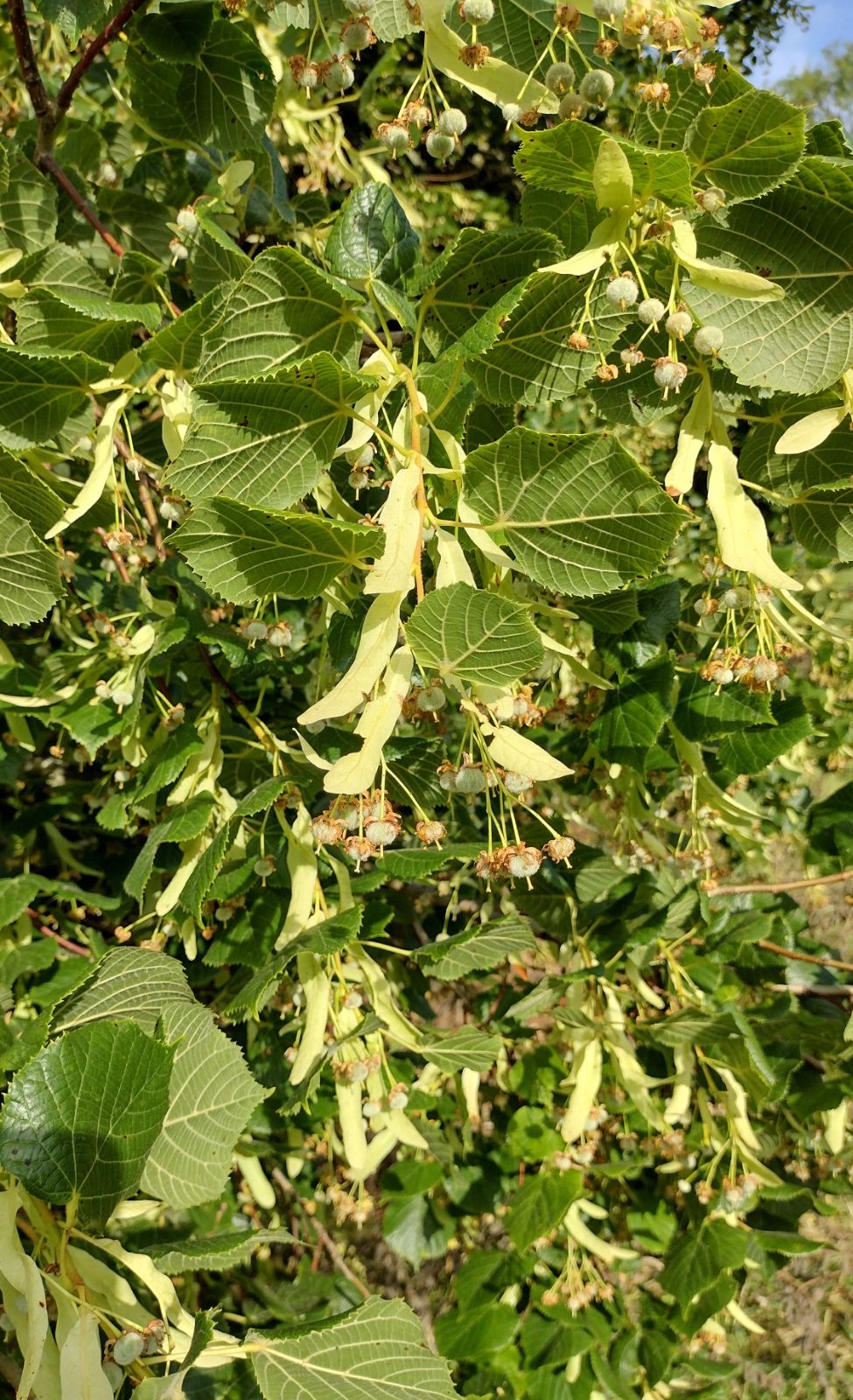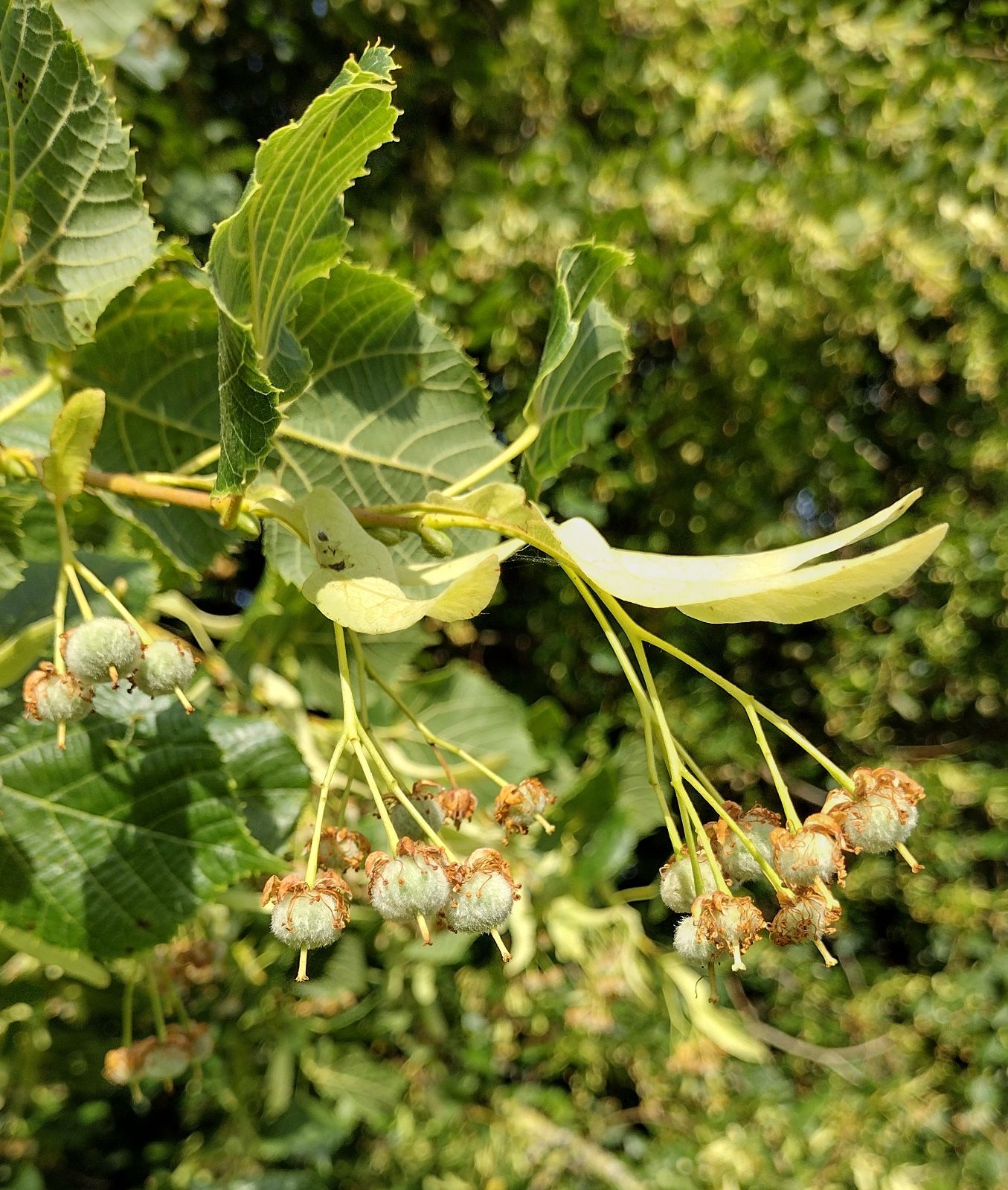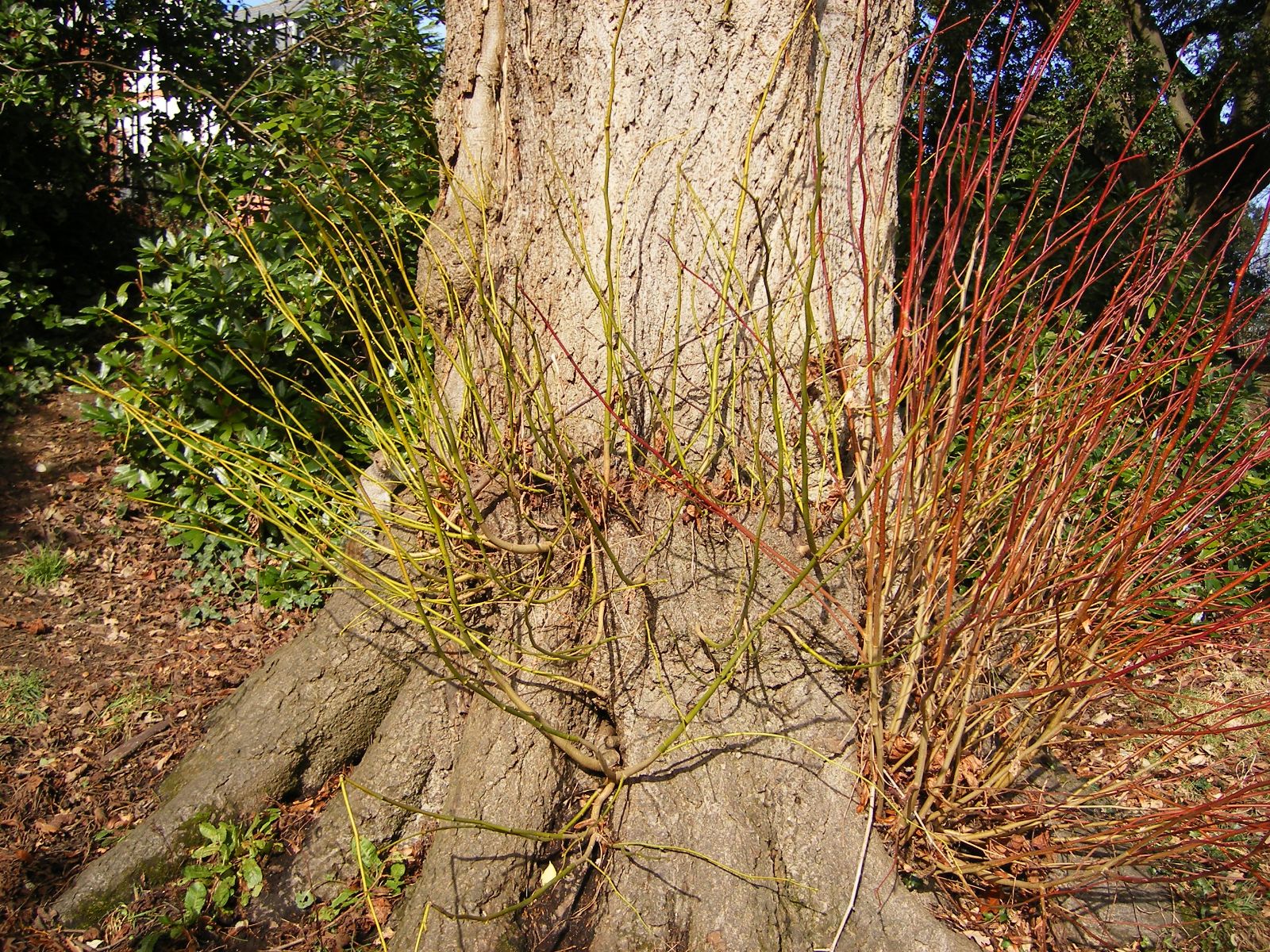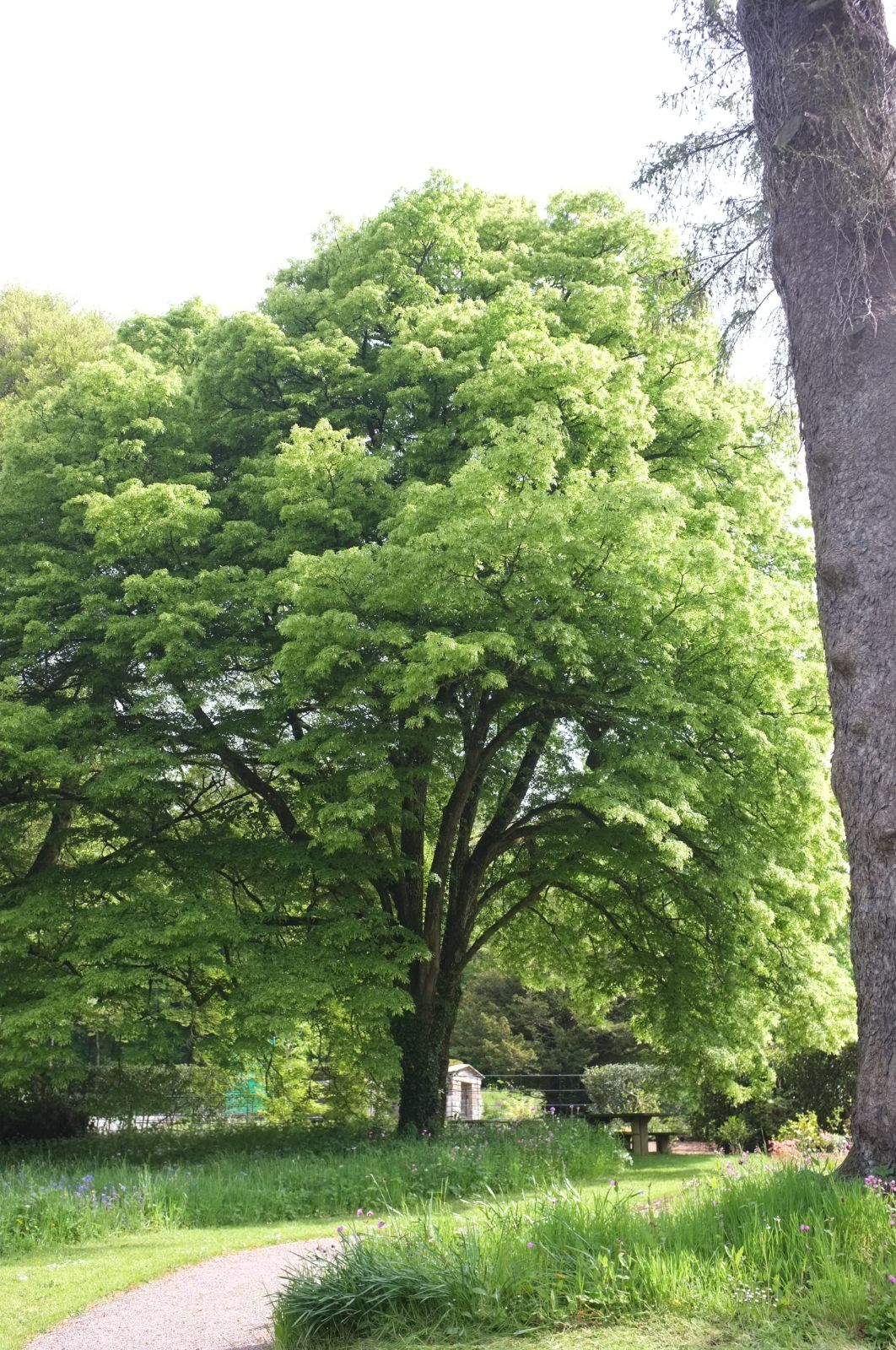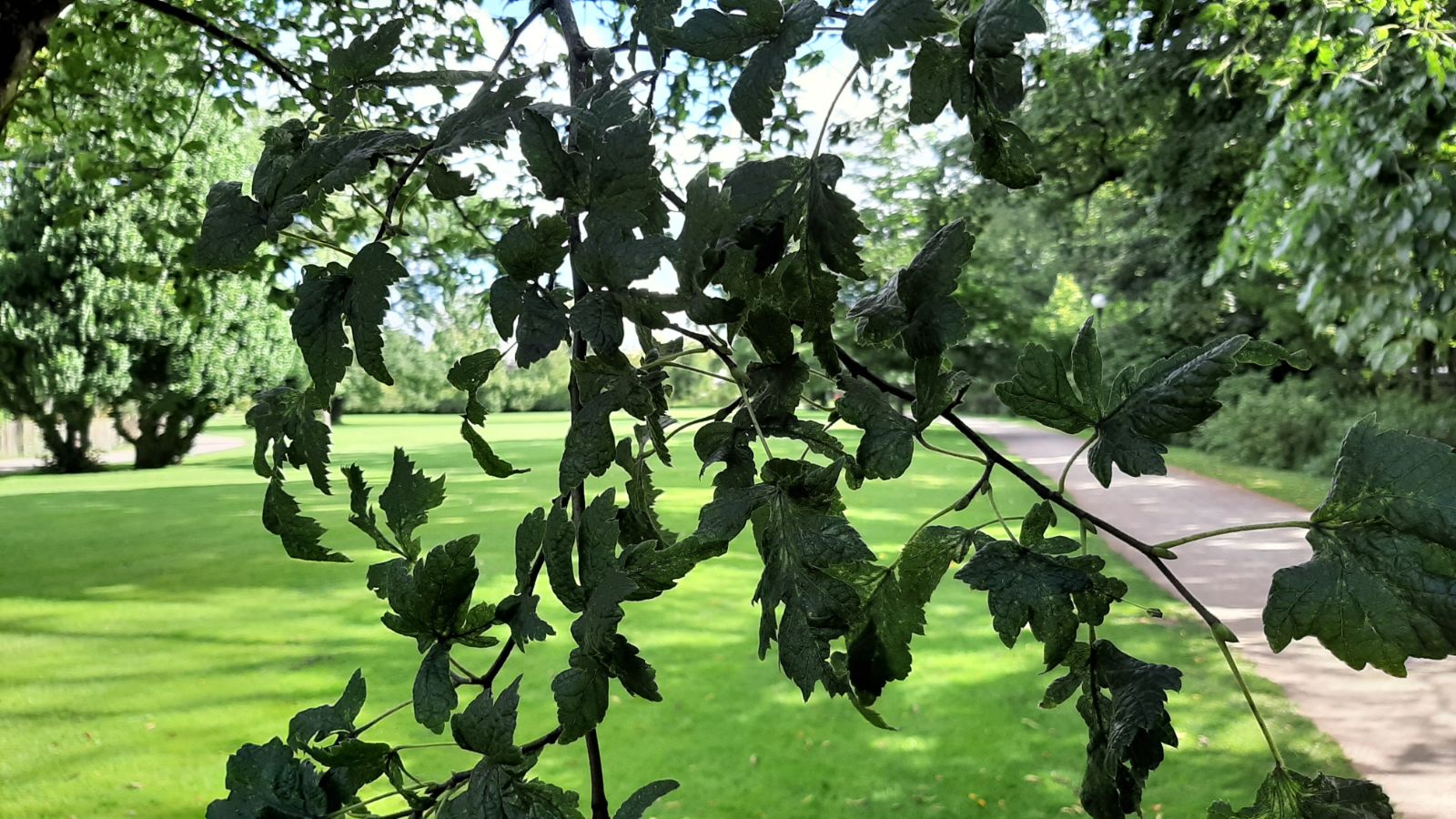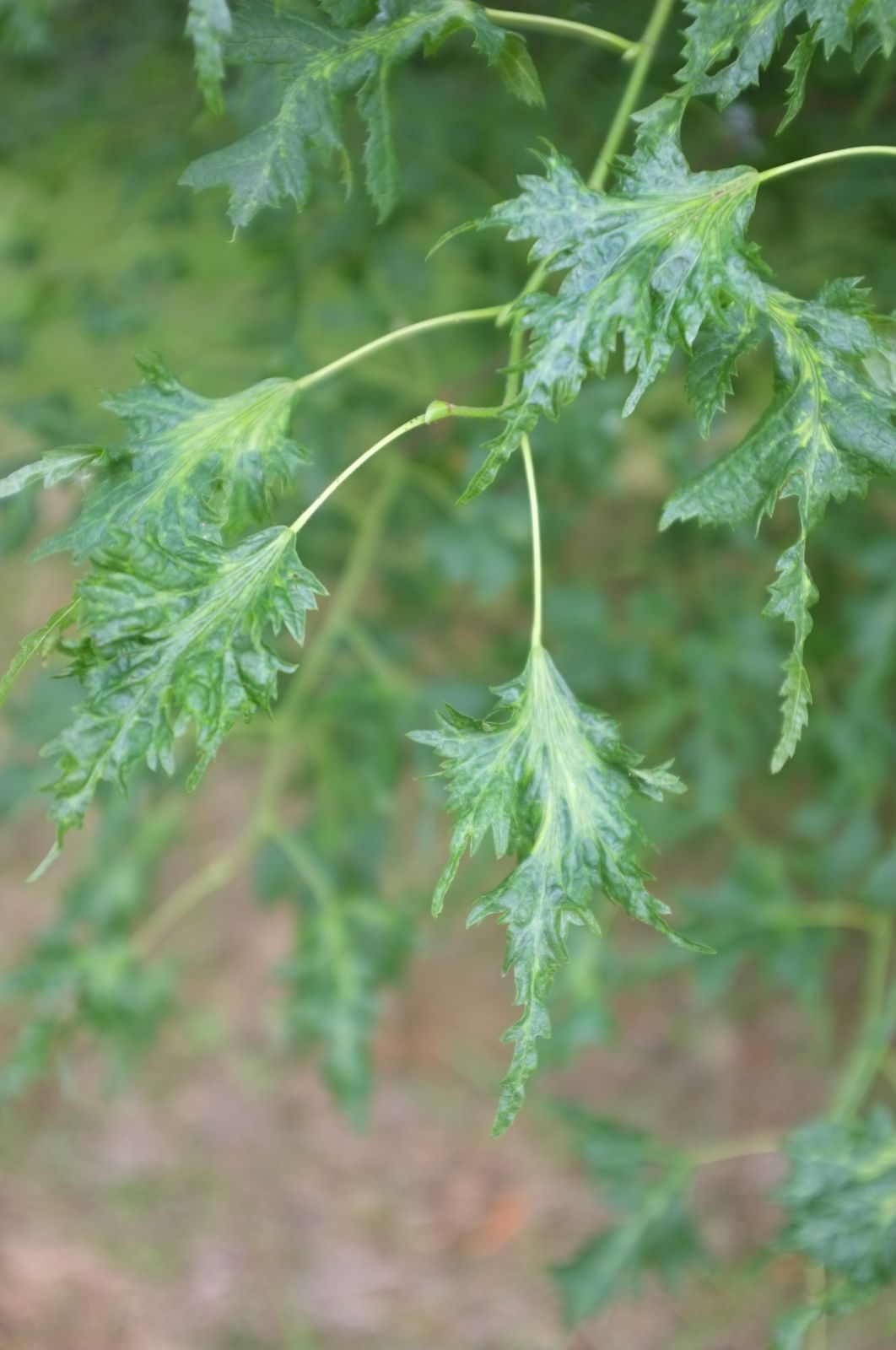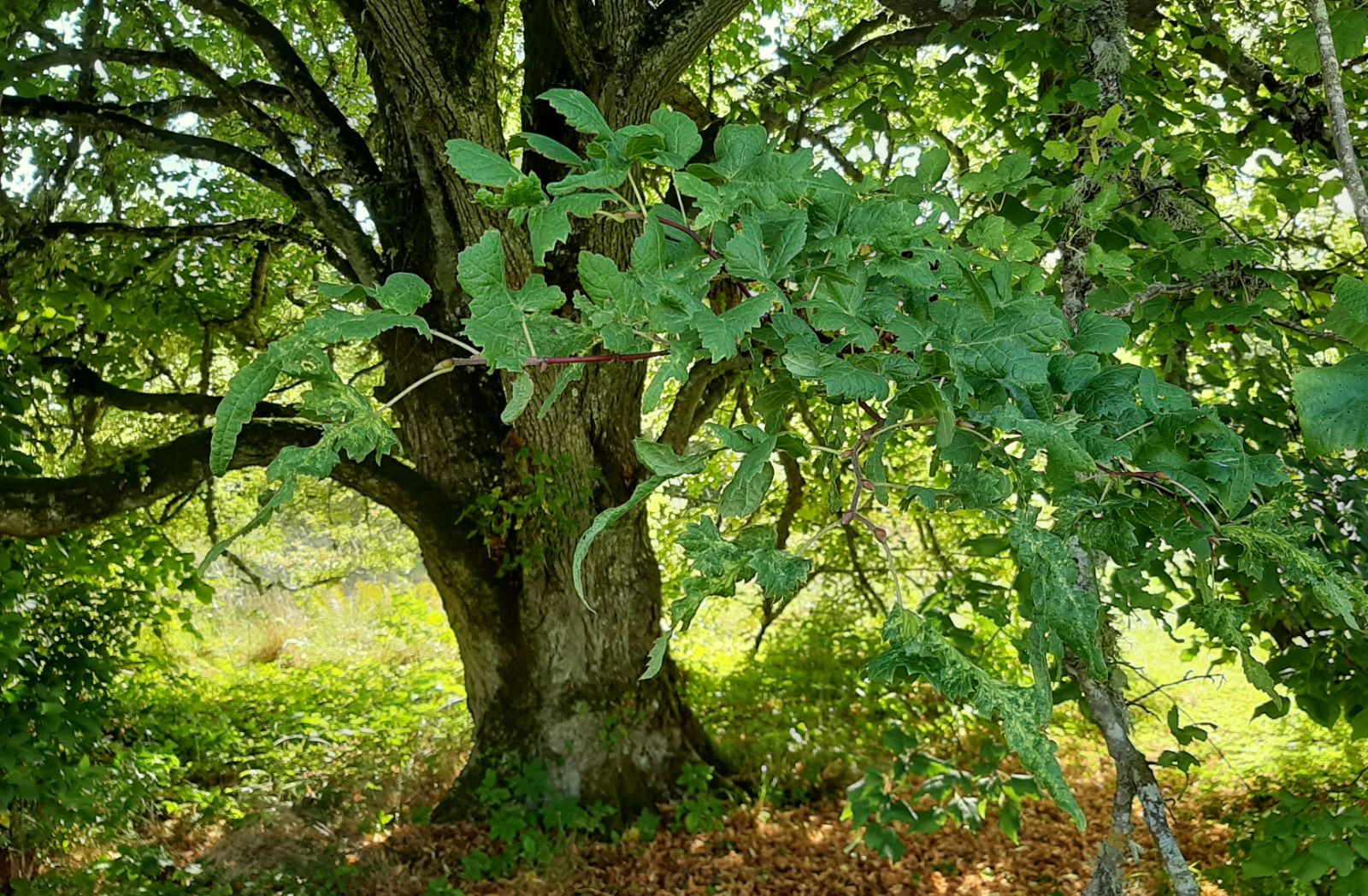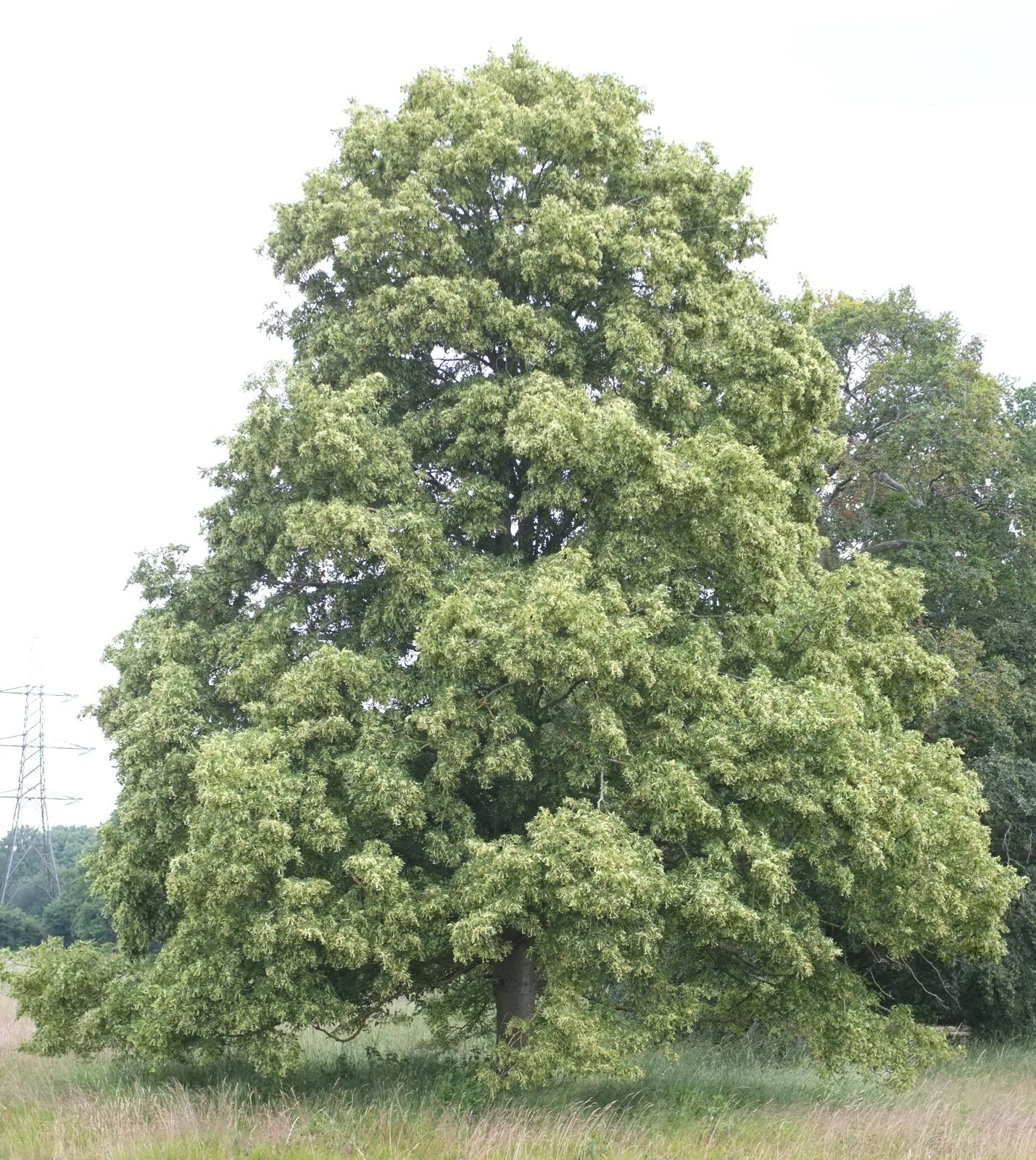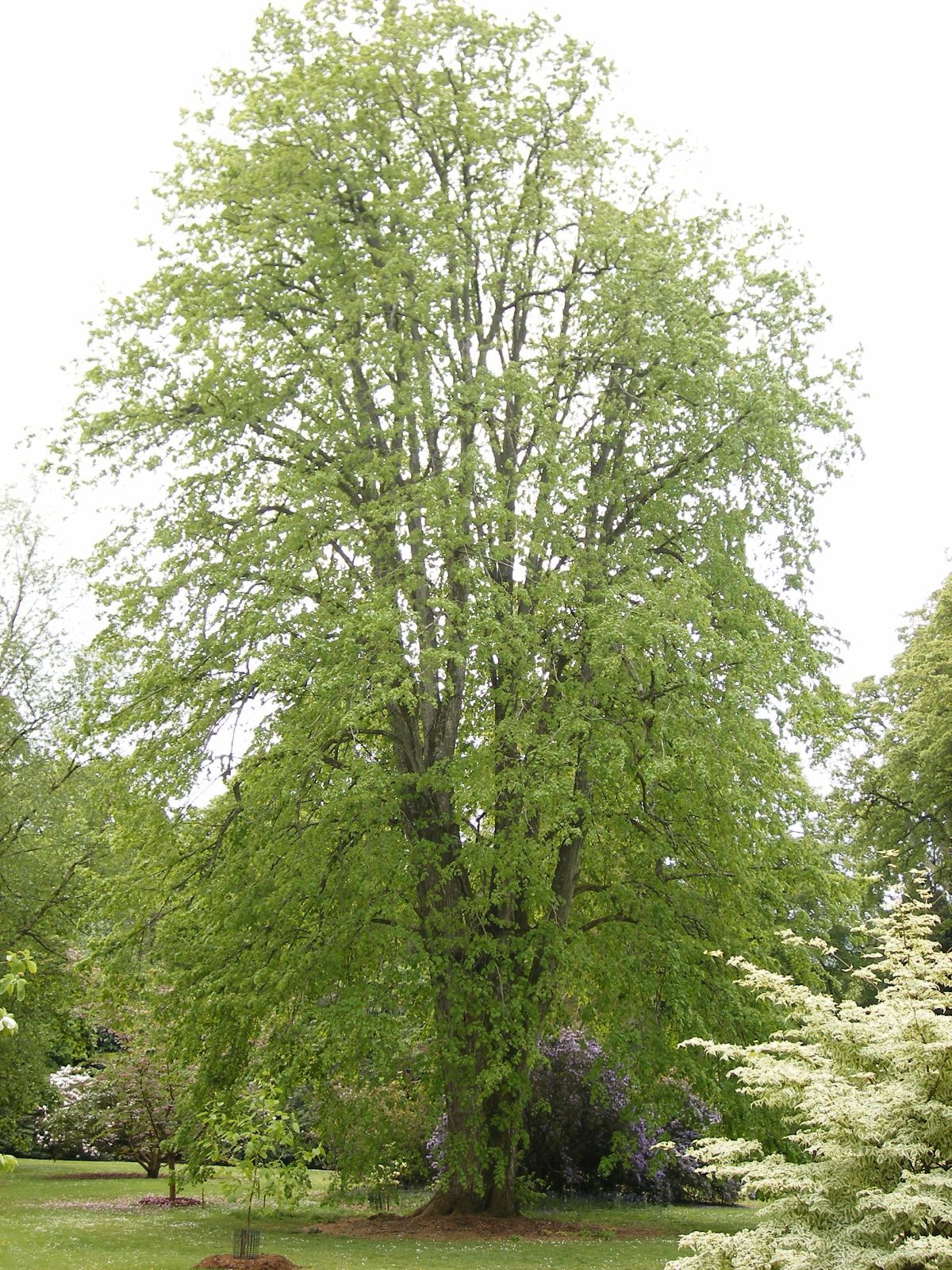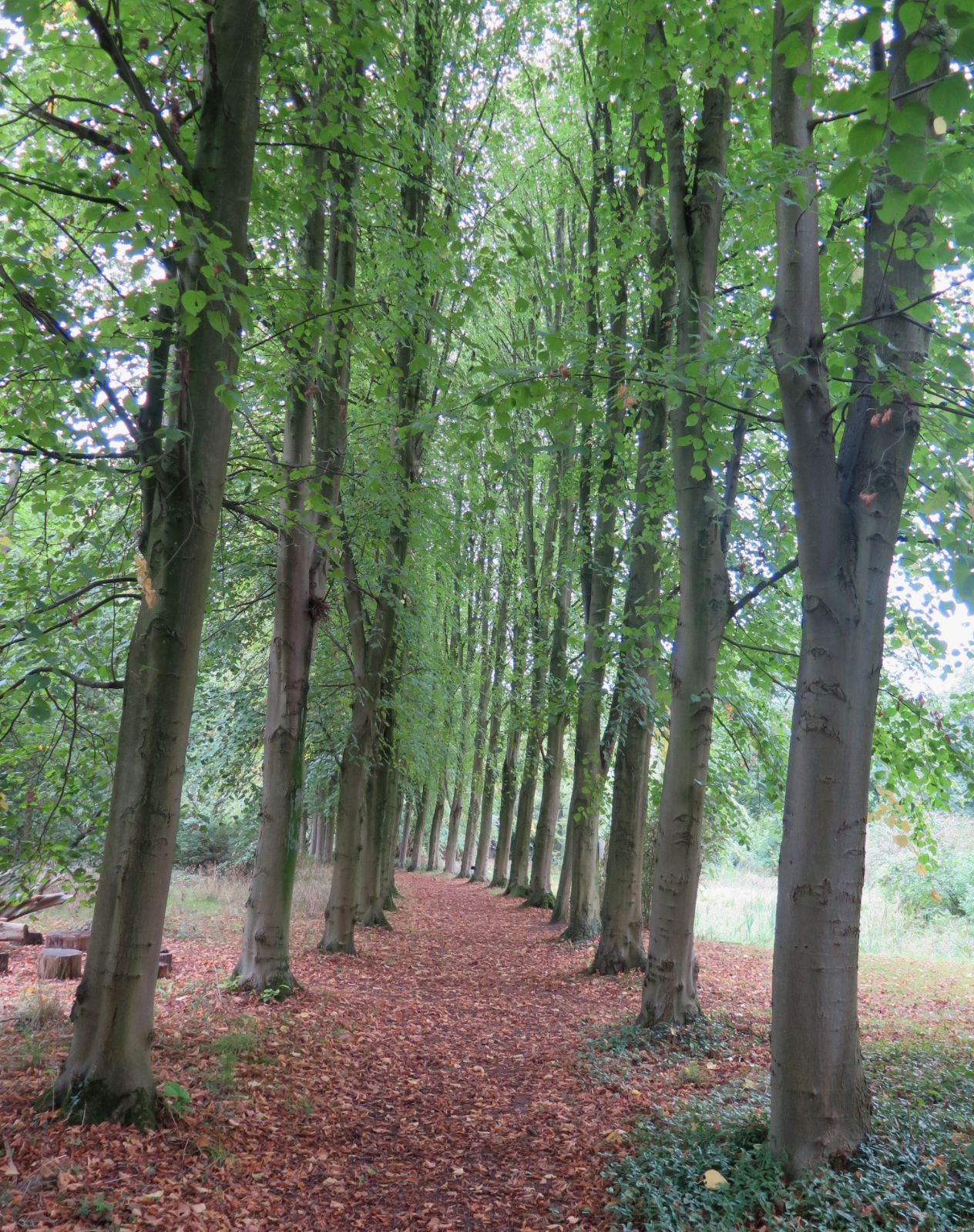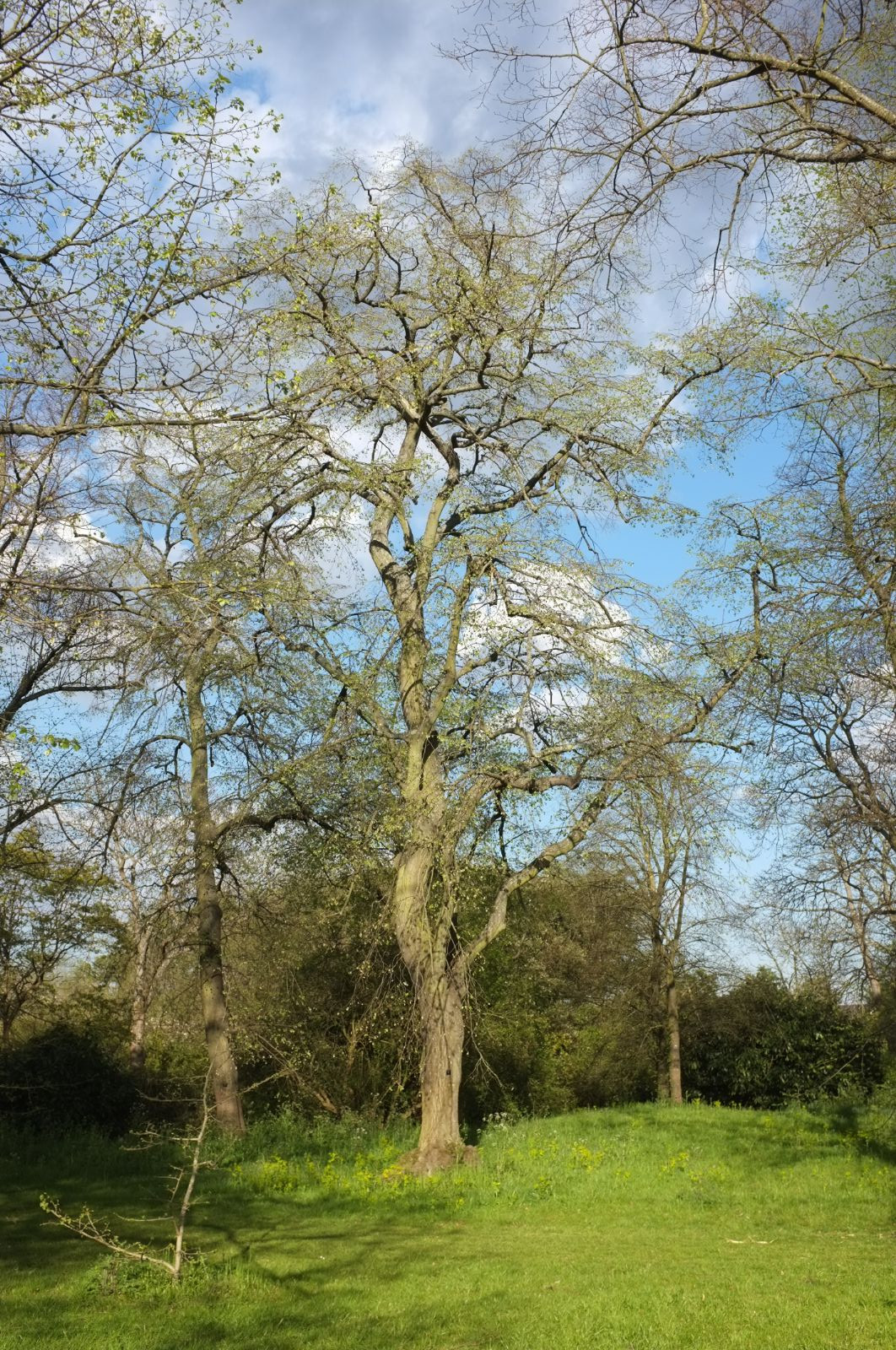Tilia platyphyllos
Sponsor
Kindly sponsored by
a member of the International Dendrology Society
Credits
Owen Johnson & Julian Sutton (2020)
Recommended citation
Johnson, O. & Sutton, J. (2020), 'Tilia platyphyllos' from the website Trees and Shrubs Online (treesandshrubsonline.
Genus
Common Names
- Broad-leaved Lime
- Large-leaved Lime
- Large-leaved Linden
Synonyms
- Tilia officinarum auct. non Crantz
- Tilia rubra DC.
Infraspecifics
Other taxa in genus
- Tilia americana
- Tilia amurensis
- Tilia callidonta
- Tilia chinensis
- Tilia chingiana
- Tilia concinna
- Tilia cordata
- Tilia dasystyla
- Tilia endochrysea
- Tilia × euchlora
- Tilia × europaea
- Tilia × flaccida
- Tilia × flavescens
- Tilia Hanwell Hybrids
- Tilia 'Harold Hillier'
- Tilia 'Harvest Gold'
- Tilia × haynaldiana
- Tilia henryana
- Tilia japonica
- Tilia × juranyana
- Tilia kiusiana
- Tilia mandshurica
- Tilia maximowicziana
- Tilia miqueliana
- Tilia mongolica
- Tilia nobilis
- Tilia × noziricola
- Tilia oliveri
- Tilia paucicostata
- Tilia tomentosa
- Tilia tuan
- Tilia 'Westonbirt Dainty'
A large tree, to 40 m, dbh 4 m, of domed habit; trunk very seldom with epicormic sprouts. Bark brownish-grey, developing longitudinal square-cracking ridges after about 30 years. Twigs 2–4 mm thick, often hairy and often reddish in sun. Buds with 3 exposed scales (2 in subsp. corinthiaca), glabrous. Leaves 6–11 × 6–10 cm, suborbicular and often with drooping sides; upper surface dark green, slightly rugose and sometimes with a sparse cover of simple hairs; underside mid-green, often with a cover of simple hairs and always with small denser patches of brownish hairs under the vein axils. Petiole sometimes with simple hairs. Marginal teeth with short mucronate tips 0.4–1 mm long. Floral bracts 6–11 × 1.1–2.2 cm, sometimes downy. Inflorescence drooping, with just 3 flowers or with as many as 7. Flowers large (12–17 mm diameter), saucer-shaped. Staminodes absent. Fruit 9–12 × 8–10 mm, obovoid, with 5 ribs, covered in dense white tomentum; wall thick and woody (Pigott 2012).
Distribution Albania Austria Belgium Bosnia and Herzegovina Bulgaria Croatia Czechia Denmark France Germany Greece Hungary Italy Luxembourg North Macedonia Moldova Montenegro Netherlands Poland mountains in the south Romania Serbia Slovakia Slovenia Spain mountains in the north and east Sweden SE coast, one site Switzerland Turkey Ukraine mountains in the south-west United Kingdom England and Wales (rare).
Habitat Woodland, mostly on calcareous soils, to 1500 m.
USDA Hardiness Zone 4
RHS Hardiness Rating H6
Conservation status Least concern (LC)
Tilia platyphyllos is a widespread and familiar species in Europe. Its range extends further south than that of T. cordata, but less far north and east. It is a more upland species than T. cordata, associated with calcareous soils, but despite their habitat and morphological differences Linnaeus failed to distinguish between the two western European species and their hybrid (Pigott 2012). Lacking stellate hairs on the undersides of the leaves, T. platyphyllos is placed in Section Anastraea. Scopoli’s specific epithet of 1771, from the Greek platys (broad) and phyllon (a leaf), reflects the usually larger leaves of T. platyphyllos, which are downy at least in familiar western European forms. Unlike T. cordata, T. platyphyllos is quite able to set fertile seed in short cool summers. Although less commonly planted in Britain than T. × europaea, this is a shapely, characterful tree, which does not produce masses of epicormic shoots (Bean 1981).
Broad-leaved Lime varies considerably across its range, especially in hairiness. Trees from the Mediterranean edge are least hairy. Hairiness increases gradually as one moves north, east and west (Pigott 2012). Schneider (1912) attempted to categorise this variation by describing five subspecies. While admitting that they are points in a continuum, Pigott (2012) adopts three of these. In decreasing order of hairiness, they are: subsp. cordifolia (Besser) C.K. Schneid. from northern, western and northeastern Europe; subsp. platyphyllos from central Europe; and subsp. pseudorubra C.K. Schneid. from Mediterranean Europe and Turkey. These distinctions are of marginal horticultural significance. A fourth, subsp. corinthiaca (Bosc ex K. Koch) Pigott, is endemic to the Peloponnese and somewhat more distinct, with essentially glabrous leaves and thin-walled, spindle shaped fruits.
As a vigorous, tough, clean-limbed tree with scented flowers opening quite early in the season, Broad-leaved Lime has long been planted as an ornamental across the British Isles. A few old examples are immense. Two hollow pollards grow in parkland on limestone at Downton Castle, Herefordshire; the larger was measured at 2.86 m dbh in 2012. In Ireland, where it is not native, a tree in parkland at Grove House, Co. Tipperary was 41.5 m tall in 2000 (Tree Register 2018).
Many of the ancient village limes of central Europe belong to Tilia platyphyllos. German examples include the Heeder Linde at Heede, 4.9 m dbh in 2016, and the Tanzlinde Schenklengsfeld, whose fragmented trunk is about 5.5 m across. A stone at the latter’s base claims that it was planted in 760 CE (monumentaltrees.com 2018).
Probably introduced early to North American cultivation, Jacobson (1996) notes that it has long been common, although usually sold as T. × europaea; he records a 29 m tall (1987) specimen in Washington State. Dirr (2009) was unable to find the species, or any of its cultivars in recent American nursery catalogues. Large-leaved Linden is well represented in arboreta within our North American area.
Many cultivars have been named, almost all in Europe: Jablonski & Plietzsch (2013, 2014) provide a thorough checklist. The vast majority are selected for crown form, especially for strongly ascending branches, leading to relatively narrow crown in youth. The most widespread of these are discussed below, but others might be encountered, including ‘Agnes’ (Hungary, by 2012), ‘Fenris’ (Denmark, post-1990), ‘K3’ (Hungary, around 1990), ‘Kamminga’ (Netherlands, by 2012), ‘Kavaleren’ (Netherlands, pre-2005), ‘Louisa Point’ (Netherlands, 1990), ‘Louisa Victory Fist’ (Netherlands, 1990), ‘Maraczi’ (Hungary, before 2012), ‘Paul Kruger’ (Netherlands, 1959), ‘Sargavesszejû’ (Poland, by 2012), ‘Zetten’ (Netherlands, 1992).
Cut-leaved forms are discussed under ‘Laciniata’, and very dwarf forms under ‘Compacta’. ‘Cucullata’ represents a little known mutant leaf form. As with other limes, variegated cultivars tend not to persist in cultivation; this is certainly the case in ‘Albo-Marginata’ (white margins, pre-1903), but some extant cut-leaved clones are variegated (discussed under ‘Laciniata’).
For a discussion of the variant grown at Kew as ‘Obliqua’ (T. platyphyllos var. obliqua (Host) Simonkai; T. obliqua Host), see T. × flaccida.
'Agi'
Slow growing, with a small crown. Of uncertain Hungarian origin, sold as a street tree by some large European tree nurseries around 2010 (Jablonski & Plietzsch 2013), but now not or scarcely in commerce.
'Aurea'
Common Names
Golden-twigged Lime
Goldtwig Linden
Synonyms / alternative names
'Aurantia'
'Sulphurea'
A clone with shoots yellow in sun (green in shade) rather than red (grey in shade). It originated in Europe before 1838, and was in the North American trade by 1853 (Jacobson 1996; Jablonski & Plietzsch 2013). Bean (1981) felt that there might be more than one clone in circulation under this name. The example in the 1890’s lime collection at Alexandra Park, Hastings, East Sussex (107 cm dbh in 2016 – Tree Register 2018) was only recognised as this cultivar (and as a grafted tree) after it was cut back and the vigorous sprouts from above the graft provided a contrast in colour to those from below it (O. Johnson, pers. obs.): this is not a very showy clone and unless new growth is regularly encouraged by pruning, it can be very dull indeed. Other examples include one planted in 1888 as ‘Aurantia’ in the Glasnevin National Botanic Garden, Dublin, 25 m, dbh 102 cm in 2018, and another at Ryston Hall in Norfolk, purchased from Späth in 1911 and 16 m, dbh 94 cm in 2008 (Tree Register 2018). A specimen planted at the Arnold Arboretum, Massachusetts in 1965 was 35.5 cm dbh by 2019 (Arnold Arboretum 2020).
‘Handsworth’ (Bean 1981) and ‘Mayday’ (Netherlands, 2011 – Jablonski & Plietzsch 2013) also have yellow twigs.
'Belvedere'
A very slow-growing, compact, shrubby Czech selection, reaching around1.5 m height and spread (Bluebell Arboretum and Nursery 2020). Found as a witch’s broom in an old tree at the Belvedere, Prague Castle (Jablonski & Plietzsch 2013).
'Compacta'
A slow-growing, bushy dwarf, originating in the Netherlands around 1925 (Jablonski & Plietzsch 2013; Geers. 2020). The original in the Wageningen Arboretum was about 4.5 m tall after 40 years (Bean 1981).
Other more or less dwarf clones include ‘Belvedere’ and ‘Pannonia’ (q.v.). ‘Dimond’ and ‘Moylinny’ were found in a nursery in Moylinny, Co. Antrim, by P.W.J. Dimond around 1982 (Santamour & McArdle 1985); both clones had grown to 3 m tall at the Castlewellan National Arboretum in Co. Down by 2015 (Tree Register 2018).
'Cucullata'
Synonyms / alternative names
var. cucullata Schneider
An extraordinary form in which at least some leaves have their sides joined at the base, to resemble a pitcher (Elwes & Henry 1913). It seems to have been associated with monasteries and convents in central Europe, and attracts legends linking the leaf with the monks’ cowls (Ješetová 2020). The best documented surviving tree is at the former Cistercian monastery at Zlatá Koruna, Czech Republic (Almusaed 2018). Its wild origin is unclear, but it seems likely that this would have been a clone passed vegetatively between monastic sites – a cultivar.
'Delft'
Narrow-crowned, with leaves staying green late into autumn. A Dutch selection made in 1956 from a city planting in Delft, and sold from the Alphons van den Bom nursery, Oudenbosch from 1965 (Santamour & McArdle 1985; Jablonski & Plietzsch 2013). A young tree grows in the Sir Harold Hillier Gardens, Hampshire (Tree Register 2018). ‘Örebro’ is similar (van den Berk Nurseries 2020).
'Fastigiata'
An older clone, narrow-crowned (at least in youth) with steeply ascending branches (Bean 1981; van den Berk Nurseries 2020). Grown in Germany since at least the mid-19th centuty, it has been quite widely planted in the United Kingdom; one had reached 14.5 m, dbh 64 cm by 2017 at Writtle College, Essex (Tree Register 2018). It is in the European trade, and was propagated commercially in North America by 1959, when the Arnold Arboretum acquired a specimen (88 cm dbh in 2019 – Arnold Arboretum 2020). It is unclear whether the earlier but less familiar name ‘Pyramidalis’ should be used, due to ambiguity around that name (Santamour & McArdle 1985; Jacobson 1996).
'Flamme du Vercors'
Narrow crowned, unusual in its late, reddish-brown autumn colour; low susceptibility to red spider mite is claimed. Selected by the Guillot-Bourne nursery, Jarcieu, France before 2012, and quite widespread in the European trade (Jablonski & Plietzsch 2013; Guillot-Bourne 2020; van den Berk Nurseries 2020).
'Glauca'
A form with blue-green twigs and leaves bluish underneath, represented by an old tree in the Royal Botanic Garden Edinburgh (19699330*A; 21 m, dbh 73 cm in 2014 – Tree Register 2018) It has had at least a small distribution, having once been listed by Kris Michielsen in Belgium (Jablonski & Plietzsch 2013).
'Herziana'
Narrow-crowned when young. Selected by the Konrad Herz nursery, Germany before 2007 and still available commercially in central Europe. The latinized cultivar name is probably invalid (Jablonski & Plietzsch 2013).
Laciniata Group
Common Names
Cut-leaved Lime
Cut-leaf Lime
Various forms with dissected leaves belong here (Jablonski & Plietzsch 2013); we discuss them collectively since many are not individually named, some names and clones are not clearly distinguished, and none are at all common.
‘Laciniata’ is the most widely used name; perhaps a single clone; it was in cultivation (origin unknown) by 1844 (Jablonski & Plietzsch 2013). A very floriferous tree, rather slender and slow-growing (but ultimately to 26 m at Drumkilbo, Perth and Kinross – Tree Register 2018), its leaves are small and variously dissected; no two leaves are the same shape, and the effect is delicate and attractive. When in flower the bracts almost exceed the foliage in coverage of the tree, making it look quite pale.
‘Filicifolia Nova’ is (or was) a variant whose leaves tend to be less deeply dissected (Bean 1981), while those of ‘Aspleniifolia Nova’ are described as more deeply cut. This is another old clone, sold by the Baumann Brothers Nursery in France from 1838, but most authorities follow Bean (1981) in presuming that the cultivar commonly planted in gardens through the 20th century is ‘Laciniata’.
A variant in Irish Gardens was described by Alan Mitchell (Mitchell 1974) as both cut-leaved and variegated; one was recorded by Mitchell at the Westonbirt National Arboretum as 15 m, dbh 32 cm in 1967 (Tree Register 2018). The name ‘Aspleniifolia Variegata’ is used for these trees by the Tree Register of Ireland, but the original source of this name is unknown.
Another variant has very broad, fasciated, yellow major veins to its twisted and shredded leaves; a tree planted in the mid-20th century by the late Maurice Mason at Talbot Manor in Norfolk was 12 m, dbh 37 cm in 2008, and there was a much younger 8 m example at Common Farm, Semer, Suffolk, in 2016 (Tree Register 2018). One extreme form of this variant is ‘Tiltstone Filigree’ with remarkably deeply cut leaves; its habit is neat and narrow. It was spotted and propagated by Donovan Caldwell Leaman at Caldwell and Sons Nurseries, Cheshire some time before the nurseries closed in 1992 (Leaman 2019); one of the two original plants, donated to the Thorp Perrow Arboretum in North Yorkshire, was 8 m, dbh 13 cm in 2019 (Tree Register 2019). ‘Donovan’s Filigree’ (Royal Horticultural Society 2018) is presumed to be the same plant, and it is also circulating simply as ‘Filigree’ (J. Grimshaw, pers. comm. 2020).
There are a number of other 20th- and 21st-century cultivars, mostly Belgian, within Laciniata Group (Jablonski & Plietzsch 2013). They include: ‘Barocco’ (A. Charlier, Belgium, pre-2005; variably cut leaves (les Jardins du Florilege 2020), some yellow spotting; ‘Capricio’ (Charlier, pre-2005, relatively large leaves); ‘Eniapseth’, (Charlier pre-2010, with slight variegation); ‘Erkegem’, (found at the Chateau d’Erkegem in Belgium, 1989; creamy-white variegation; possibly T. cordata misidentified); ‘Henryk’ (Bronislaw Szmit, Poland pre-1998; from a witch’s broom; dwarf and somewhat weeping – Szkółka Szmit 2020); ‘Mercedes’ (Charlier, pre-2010, weak, unstable variegation); ‘Pepi’ (De Martelaer, Netherlands, pre-2010; from a witch’s broom on ‘Laciniata’, dwarf with drooping red shoots; sold top grafted on 1m stem – De Martelaer Jo Nursery 2020)); ‘Stephanie’ (Charlier, pre-2010; variegated, with irregular yellow central zone).
'Louisa Life'
Strong-growing, rather narrow-crowned in youth, with reddish branchlets. Introduced by the Ton van den Oever nursery, Netherlands in 2002 and still commercially available in Europe (Jablonski & Plietzsch 2013; Guillot-Bourne 2020).
'Naarden'
A full-sized variety with a broadly ovoid crown, retaining its leaves unusually late into autumn; a degree of aphid resistance is claimed. Selected in the Netherlands before 1980, and still commercially available in Europe (Jablonski & Plietzsch 2013; van den Berk Nurseries 2020).
'Örebro'
Regular, narrow crown, freely flowering. A Swedish selection, found in a park in Örebro by G. Karlsson and distributed by the Lundström nursery from 1935 (Jablonski & Plietzsch 2013). Still propagated commercially in Europe; ‘Delft’ is similar (van den Berk Nurseries 2020).
'Pannonia'
A compact form, which is quite widespread in the European trade, apparently normally offered top-grafted to give a standard with a small ball-shaped crown. Selected by M. Barabits, Hungary, and first sold by the Bömer nursery, the Netherlands, around 1985 (Jablonski & Plietzsch 2013; Bruns Pflanzen-Export 2020).
'Pendula'
A form with drooping branches, perhaps old but of uncertain origin (Santamour & McArdle 1985). The tree in the Sir Harold Hillier Gardens, Hampshire, 16 m, dbh 72 cm in 2017 (Tree Register 2018), hardly deserved the epithet ‘weeping’. A few large old trees with a slight tendency to weep, such as the one in the Lower Garden at Knightshayes, Devon, 28 m, dbh 144 cm in 2017 (Tree Register 2018), may also represent this cultivar but are not obviously grafted.
'Prince's Street'
Upright crown, narrow in youth, with bright red branchlets in winter (Hillier Nurseries 2020; van den Berk Nurseries 2020). Origin unrecorded, but there may be a clue in the name; introduced before 1991 (Hillier Nurseries 1991) and still in the European nursery trade.
'Pyramidalis Aurea'
Young leaves yellow, turning green later, crown narrow in youth. An old German clone (van den Berk Nurseries 2020).
'Rathaus'
Vigorous, narrow-crowned in youth. Origin unknown, before 2009; marketed as a street tree in central and eastern Europe (Jablonski & Plietzsch 2013; Lappen Tree Nurseries 2020). The German cultivar name translates as ‘Town Hall’.
'Rubra'
Synonyms / alternative names
Tilia platyphyllos 'Corallina'
Awards
AGM
A well-known name in cultivation, ‘Rubra’ has red winter twigs and was recorded in cultivation by 1770 (Jablonski & Plietzsch 2013). Red-twigged forms occur widely in wild populations. While examples in cultivation are propagated by grafting or layering (Bean 1981), whether or not they represent a single clone is a moot point. At any rate, red winter twigs and an upright habit in youth are common to most typical Broad-leaved Limes in Britain (O. Johnson, pers. obs.).
'Street Parade'
Synonyms / alternative names
'Streetwise'
Narrow-crowned, at least in youth, with ascending branches. Selected for street planting by Hillier Nurseries in the early 1980s, and introduced in 1998 (Edwards & Marshall 2019).
'Tortuosa'
A curiosity with twisted young shoots, sometimes forming loops. It was found in a batch of layered trees, given to the Royal Horticultural Society’s garden in Chiswick in 1888 (Bean 1981; Jablonski & Plietzsch 2013), and grafted at Royal Botanic Garden, Kew, where material traceable to the original still grows (1972.12987; 21 m, dbh 58 cm in 2010 – Tree Register 2018); it is no longer a striking plant. The clone is still in the nursery trade.
'Vitifolia'
Synonyms / alternative names
Tilia vitifolia Host
Tilia platyphyllos var. vitifolia (Host) Simonkai
A ‘vine-leaved’ lime with weakly three- or five-lobed leaves, resembling those of Tilia mongolica but considerably larger. Of unknown origin, it was grown at Kew Gardens by 1894 (Jablonski & Plietzsch 2013). Similar sports occur in several lime species Pigott (2012) but this is the only named form, and the only one to have been planted at all widely. An example in the Dell at Tortworth Court, Gloucestershire was 22 m, dbh 60 cm in 2015 (The Tree Register 2018).
'Zelzate'
Dense, compact, ovoid crown, consistent growth rate; an important commercial clone for street planting. Introduced by the De Martelaer nursery, Belgium, before 2005 (Jablonski & Plietzsch 2013; New Plants and Flowers 2015).

